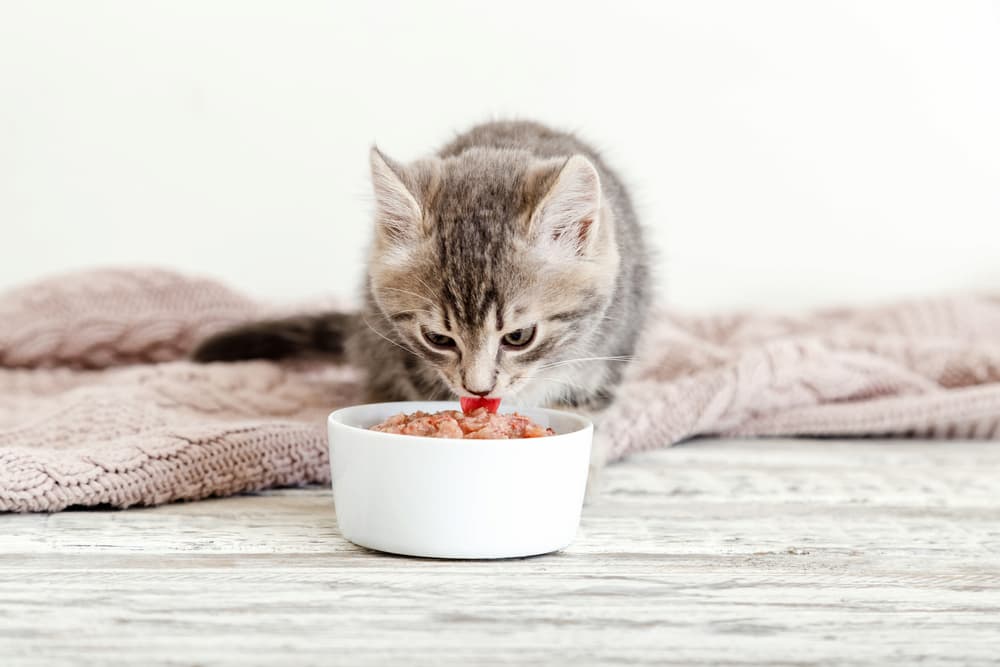How to Keep Cats Out of Plants: 5 Tested Tips

If you’re a cat parent who is also a plant parent, you’re taking care of a lot in your household. And by now, you know that cats are notoriously curious – so you’ve probably noticed them checking out (or nibbling on) your house plants. While some plants are totally fine for cats to explore (and can even be beneficial), many plants can be toxic for your cat.
A 2020 study by the American Veterinary Medical Association reported that one of the most common calls to the U.S. Animal Poison Control Center for cats included plants. [1] That’s why it’s important that you know exactly how to keep cats out of plants, and which plants are safe to have inside your home.
Here’s everything you need to know about how to keep cats out of house plants, as well as how to deter cats from plants (including the best cat repellent for plants).
Cats and Houseplants: A Troublesome (and Dangerous) Combination
If you have a cat who loves to mess with your houseplants, it can not only make a big mess and be a death sentence for your plants, it can also be extremely dangerous for your cat.
“Many houseplants contain toxins that can be harmful to a cat if ingested,” says Dr. Bruce Kornreich, DVM, director of the Cornell Feline Health Center. “The harmful effects of these toxins vary with the species of the plant and can include damage to the kidneys, heart, GI, tract, liver, and central nervous system.”
He notes that the list of potentially toxic plants is quite long, but common culprits in feline intoxications include:
- Lilies
- Poinsettias
- Sago palms
- Azaleas
- Rhododendrons
- Dieffenbachia
- Mistletoe
- Holly
- Amaryllis
- Daffodils
- Cannabis
Dr. Kornreich also points out that a complete list of plants that are toxic (and non-toxic) to cats can be found at the ASPCA.
Symptoms of Plant Toxicity in Cats
If your cat does ingest a toxic plant, they may experience a variety of symptoms, including (but not limited to) [2]:
How to Keep Cats Out of Plants: 5 Expert Tips

You can safely keep plants in your home (and your cats away from them) with these tips:
Tip #1: Don’t bring toxic plants into the home
It may seem obvious, but this is the best guaranteed plan. “Cats can’t be exposed if the plants are not present in the home,” says Dr. Kornreich.
Tip #2: Keep any toxic plants in a room/location that is secured (i.e. locked)
If you choose to keep a toxic plant in your home, make sure your cat cannot get to it. “Preventing access prevents exposure,” says Dr. Kornreich. “The best plan is to DENY ACCESS.”
Tip #3: Repel cats with a non-toxic spray
You can also keep your cats away from toxic plants by using a natural, non-toxic spray on your houseplants. “Some owners have had success in keeping cats away from plants by lightly spraying them with things cats don’t prefer but are not toxic in small amounts, such as very diluted (in water) citrus,” says Dr. Kornreich. “Placing lemon or orange peels in the soil of a plant may similarly repel cats.”
Tip #4: Have daily play time
Make sure you are spending time playing with your cat each day to keep them entertained and letting their curiosity get the best of them. “Take part in dedicated play time with your cat for 5 to 10 minutes each day,” encourages Dr. Kornreich. “This helps prevent boredom, which can prompt cats to eat plants.”
Tip #5: Banish boredom with toys and furniture
In addition to play time with you, keep your cat entertained on their own with toys and props like furniture. “Provide cat-approved toys, perches, kitty condos, food puzzles, and a catio, if possible,” says Dr. Kornreich. “This provides a safe alternative to play with for cats that may be bored.”
Cat-Safe Plants to Enrich Your Cat’s Environment

While we’re mainly focusing on the plants that are toxic to cats, there are some plants that can actually be good for our feline friends. In fact, it can be helpful to provide acceptable, healthy alternative plants for cats to investigate.
According to Dr. Kornreich, healthy plants to keep around cats include:
“This provides a healthy outlet for cats that are interested in plants,” he says. “I recommend placing these plants in places that cats can reach easily (especially for older cats that may have osteoarthritis/mobility issues) without risk of falling (i.e. shelves, stairs) or knocking plants onto themselves…” He also warns against placing plants in potentially hazardous areas, like near a stove.
Finally, you should always check with your veterinarian about the safety of any plants in the home before allowing cats access to them.
References:
- Swirski, A. L., Pearl, D. L., Berke, O., & O’Sullivan, T. L. (2020). “Companion animal exposures to potentially poisonous substances reported to a national poison control center in the United States in 2005 through 2014.” Journal of the American Veterinary Medical Association, 257(5), 517-530. Retrieved from: https://doi.org/10.2460/javma.257.5.517
- BS, Lynn & DABVT, Safdar. (2006). “An overview of potentially life‐threatening poisonous plants in dogs and cats.” Journal of Veterinary Emergency and Critical Care. 16. 25 – 33. 10.1111/j.1476-4431.2005.00151.x. Retrieved from: https://www.researchgate.net/publication/227690903_An_overview_of_potentially_life-threatening_poisonous_plants_in_dogs_and_cats



